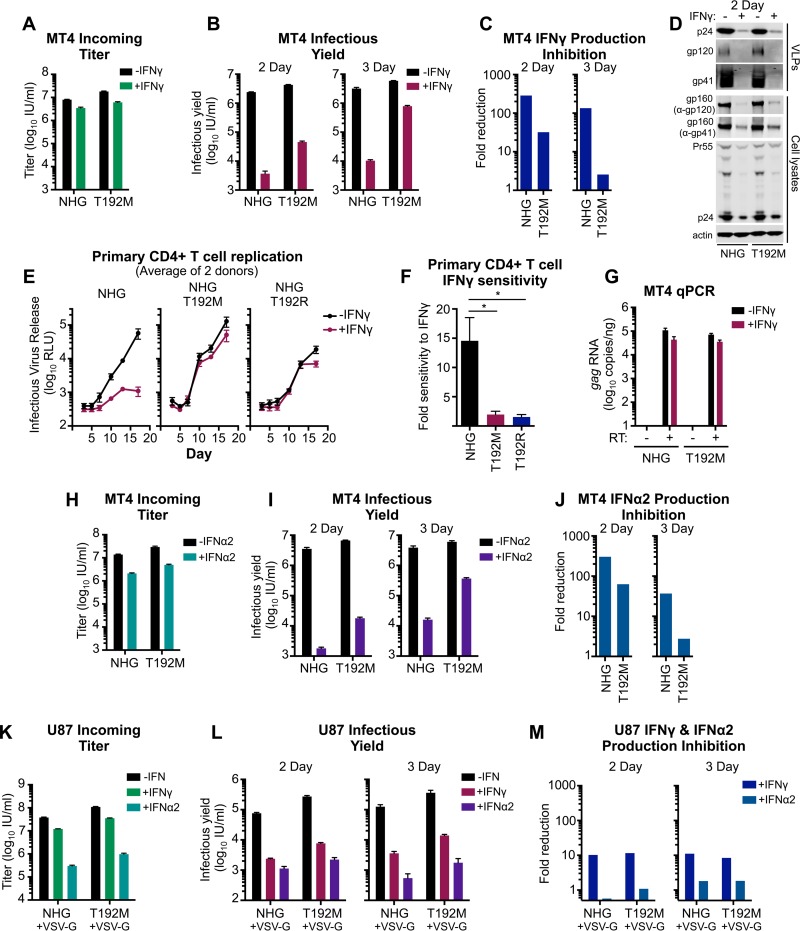FIG 10.
T192M confers partial resistance to late IFN-α2- and IFN-γ-mediated inhibition in MT4 and primary CD4+ T cells but not in U87 cells. The infectious titer (A) and infectious yield in the presence and absence of IFN-γ pretreatment (B) as well as production inhibition (C) were assessed for HIV-1 (NHG) and the T192M mutant in MT4 cells, as described in the legend of Fig. 5 (although the virus-containing supernatants used to calculate the infectious yield shown in panel B were titrated on MT4 cells rather than TZM-bl cells, as in the experiment shown in Fig. 3A). (D) Viral capsid and glycoprotein abundance in cell lysates and supernatant particulate matter from the experiment shown in panel B (day 2) was assessed by Western blotting. (E) Infectious yield of NHG, NHG T192M, and NHG T192R from primary CD4+ T cells, with or without IFN-γ, at an MOI 0.05 at 3 to 17 days (determined by TZM-bl assay). Shown are average values from two donors (n = 4 per donor). (F) Primary CD4+ T cell sensitivity to IFN-γ, as determined by ratios of the areas under the curves (AUC) (without IFN-γ AUC/with IFN-γ AUC), using data from panel E. (G) The number of copies of transcribed gag (following subtraction of cell-associated viral RNA, all measured by qPCR), in the presence or absence of reverse transcriptase (RT) for NHG and NHG T192M, either with or without IFN-γ pretreatment (24 h), as indicated, in MT4 cells. (H to J) The impact of IFN-α2 pretreatment (24 h) was assessed as in panels A to C in MT4 cells. (K to M) The impact of IFN-γ and IFN-α2 in U87 cells was assessed as in panels A to C but using VSV-G pseudotyped NHG and T192M. All error bars indicate SEM (n = 3 to 5). Statistical analyses were performed using unpaired two-tailed t tests (*, P < 0.05).

